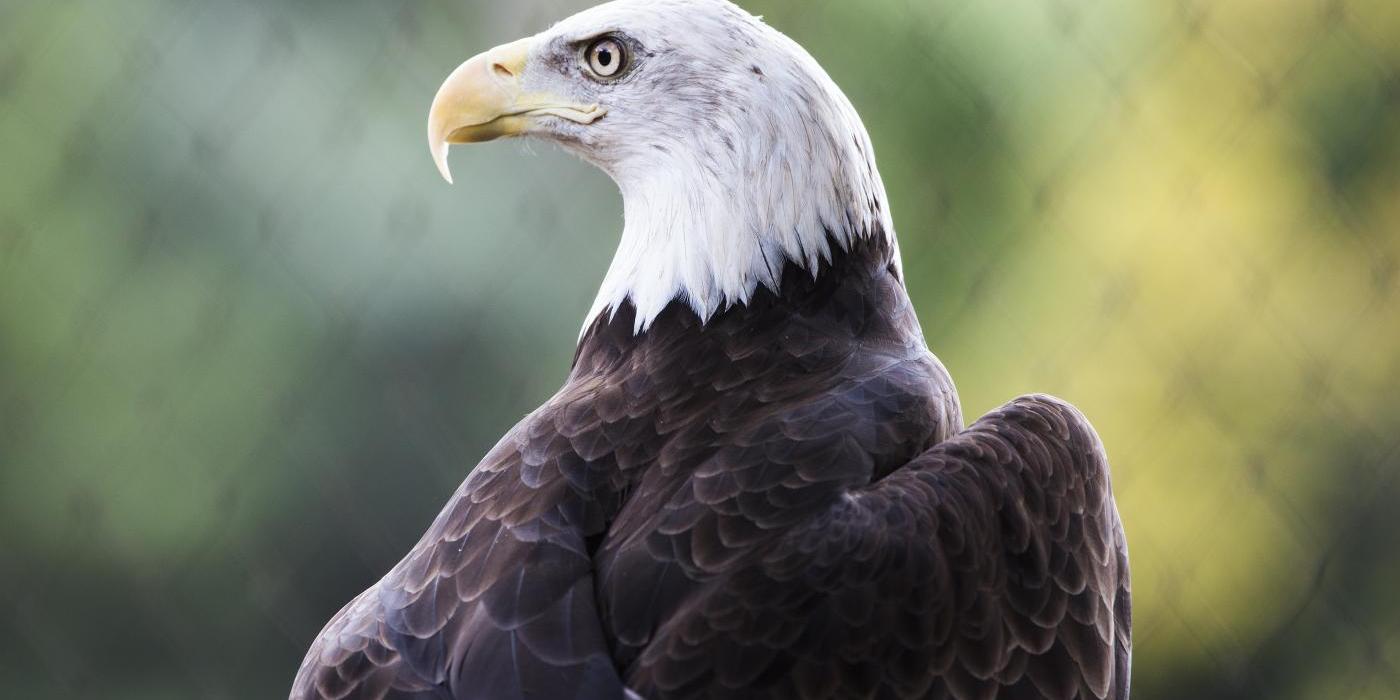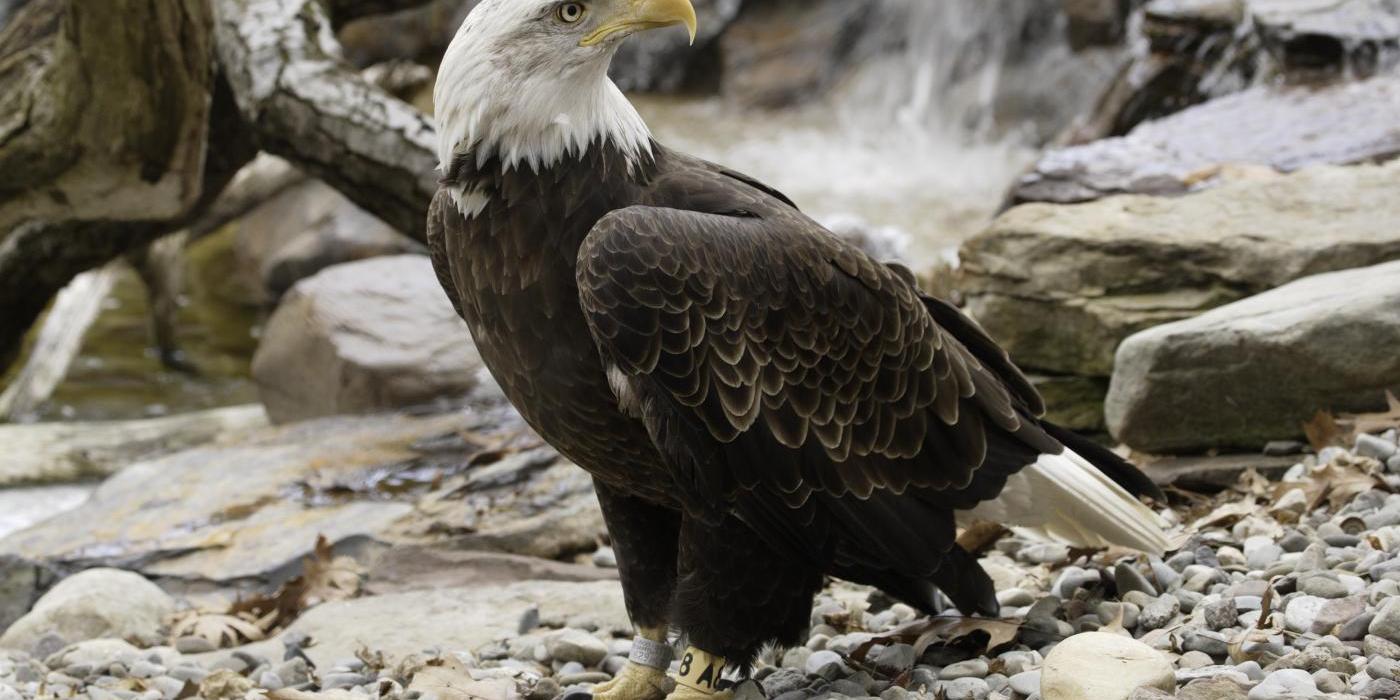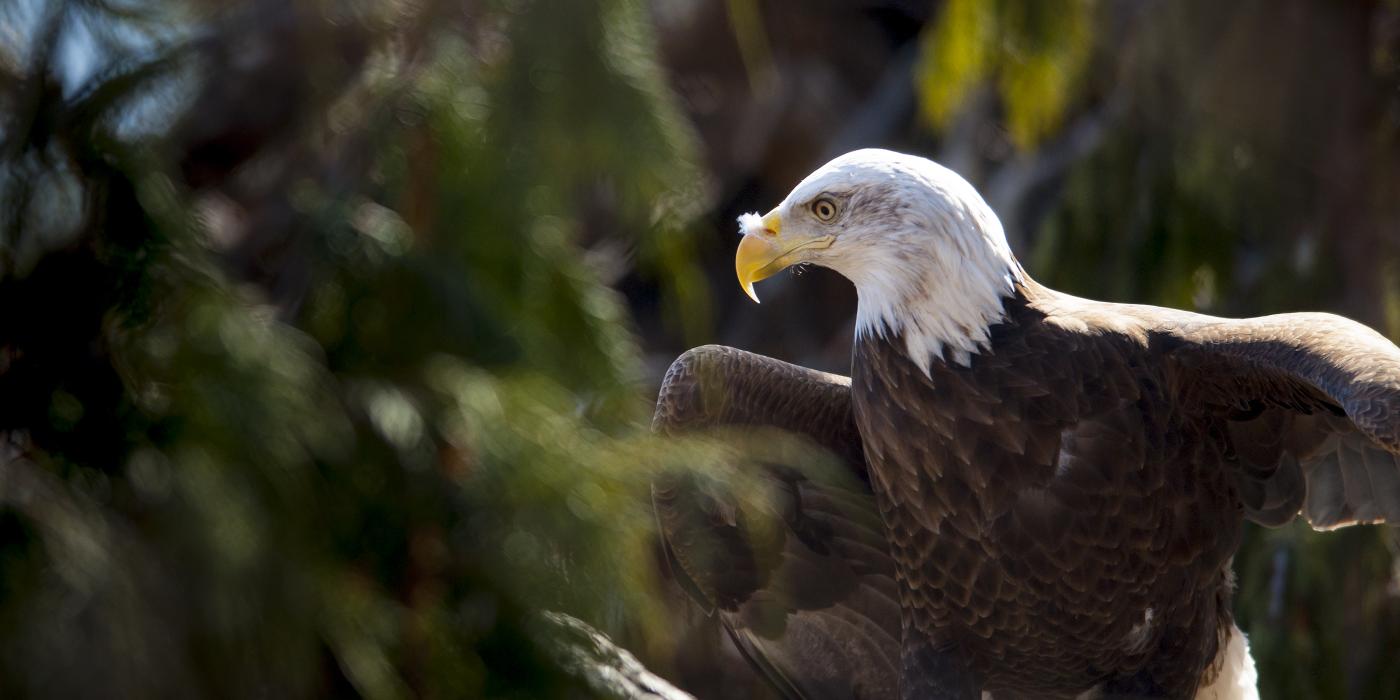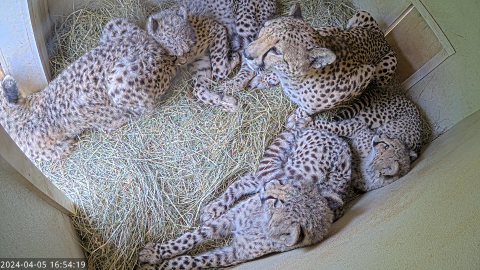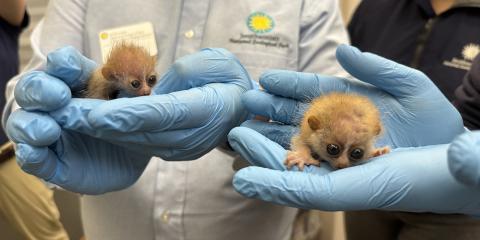Physical Description
The bodies of mature bald eagles, both males and females, are mostly brown with a distinctive snowy white head, neck, and tail. They have pale yellow irises and yellow feet and beaks. Juvenile birds are a mottled brown with white blotches and do not obtain the full distinctive plumage of the adults until they are 4 or 5 years old.
Size
Bald eagles range in weight from 6.5 to 14 pounds (3 to 6.5 kilograms) with a wingspan of up to 8.5 feet (2.6 meters). Females are generally larger than males and have a slightly wider wingspan. Northern birds are usually larger than southern birds.
Native Habitat
Bald eagles are found throughout North America. The breeding population ranges primarily from central Alaska through much of Canada and the Great Lakes across to Maine, through the Rocky Mountains to Yellowstone, along the Gulf coast from Texas east to Florida, then north along the Atlantic coast to New Jersey, with scattered breeders elsewhere. They are absent as a regular breeder from the interior of the lower 48 states and are recovering from the effects of the heavy use of pesticides beginning in the 1940s.
Bald eagles are typically found near large bodies of water and associated grasslands, marshes, rivers and streams.
Lifespan
Bald eagles can live up to 50 years.
Communication
Bald eagles have a rather wimpy voice for such large, majestic birds. They have a squeaky alarm call used near the nest, and a similar vocalization usually uttered with a vertical head toss. They also call while in flight. The "screaming" vocalization often associated with the bald eagle is actually a red-tailed hawk call.
Food/Eating Habits
Bald eagles are well adapted to their lifestyle. They possess sharp, pointed beaks designed for ripping and tearing prey into bite-sized pieces. They have powerful legs and feet that are equipped with large talons used for killing their prey.
Bald eagles are opportunistic foragers but prefer fish as their primary food and are found in great densities where fish are abundant. They also eat sea birds and ducks or hunt over grasslands and marshes for small mammals such as rabbits, squirrels, prairie dogs and muskrats. Bald eagles eat carrion willingly and are notorious for robbing osprey of their catches. Eagles wait on a favorite perch for an osprey to return to its nest with a fish in its talons for its own young, and then harass the smaller raptor until it is forced to drop its prey for the eagle to retrieve. When hunting for fishes, it does not usually dive into the water like the osprey but instead searches for fish near the surface.
The bald eagle's diet at the Smithsonian's National Zoo consists of rats, fish, chicken leg quarters and quail.
Social Structure
Bald eagles mate for life and they reinforce their pair bond through often-spectacular flight displays. In winter, bald eagles sometimes collect in large groups close to where salmon come to spawn.
Reproduction and Development
Bald eagles become territorial during breeding season. The talon-grappling, cartwheeling fight they are known for is an aggressive territorial dispute, not a courtship behavior. Their territories vary greatly by geographic location and home ranges appear to overlap. Suitable roosting sites are usually large trees within a kilometer of water and it appears that sites are selected for their height, diameter and protection from inclement weather and predators.
Mating occurs on branches or other secure perches and is preceded by tail pumping and wing flapping displays by the male. Timing of reproductive activity differs by climate and latitude, but usually occurs between October and May. Eagles construct their nests near water in tall trees or on cliffs using large sticks. The nest is lined with twigs, grasses and other soft materials. Since these nests are used year after year, they may become very large, up to 13 feet (4 meters) tall and ten feet (3 meters) across. Bald eagles lay two, occasionally three, eggs that are incubated by the parents in turns for 34 to 36 days. The young remain in the nest for ten to 12 weeks. Young are initially closely cared for but later, are left increasingly alone as both parents hunt for food. At 6 weeks, the young are old enough to fly, yet have a relatively long period of immaturity ahead of them. Although both parents care for the young for many weeks, a high percentage does not survive their first year. The average eagle attains sexual maturity at 5 years. It is interesting to note that even in an area of abundant nests, a substantial portion of the adult population may be non-breeders.
Conservation Efforts
Bald eagles require three things for survival: an adequate supply of food, nesting sites close to food, and a reasonable degree of freedom from disturbance during nesting periods. Because of their large size, bald eagles need a substantial food base and it is important that the home range includes a body of water.
When the bald eagle was adopted as our national symbol in 1782 there were between 25,000 and 75,000 birds nesting in the lower 48 states. Illegal shooting, habitat destruction, lead poisoning and the catastrophic effects of the pesticide DDT in their prey base reduced eagle numbers to only 417 pairs by 1963. Legal protection began with the Bald Eagle Protection Act of 1940 and continued with the Endangered Species Preservation Act of 1966 and the 1978 listing under the Endangered Species Act of 1973.
The single most important regulation affecting bald eagle recovery may have been the banning of DDT for most uses in the United States in 1972. In 1995, the U.S. Fish and Wildlife Service down-listed Bald Eagles from endangered to threatened in most of the United States. They were never listed in Alaska, and had already been listed as threatened in Michigan, Minnesota, Wisconsin, Oregon and Washington. In the 25 years since they were declared endangered (1978) in most of the country, bald eagles have undergone a strong increase in numbers and an expansion in range. USFWS estimates there are currently more than 7,000 breeding pairs.
Though the recovery has been spectacular, bald eagles remain threatened by illegal shooting and loss of habitat due to wetland drainage and human occupation of waterfront areas. Lead poisoning from shot ingested when feeding on carrion was a major problem before the phasing out of lead shot for waterfowl hunting in 1991. Large quantities of lead remain in the environment. In the past 15 years, the National Wildlife Health Research Center has diagnosed over 100 cases of poisoning in bald eagles.
Many of these cases are believed to be intentional poisonings through illegal use of pesticides and other restricted chemicals such as strychnine. DDT breakdown residues remain in the environment and continue to cause reproductive problems for eagles in many parts of the country. In addition, bald eagles require waterfront property for their home ranges and are in direct competition with people who enjoy the same habitat. The USFWS delisted the bald eagle from the Endangered Species List on August 9, 2007. However, they are still protected under the Bald and Golden Eagle Protection Act and the Migratory Bird Treaty Acts.
Help this Species
- Organize or attend a stream, river, lake or other waterway cleanup in your area to preserve aquatic habitats for local species.
- Share the story of this animal with others. Simply raising awareness about this species can contribute to its overall protection.
